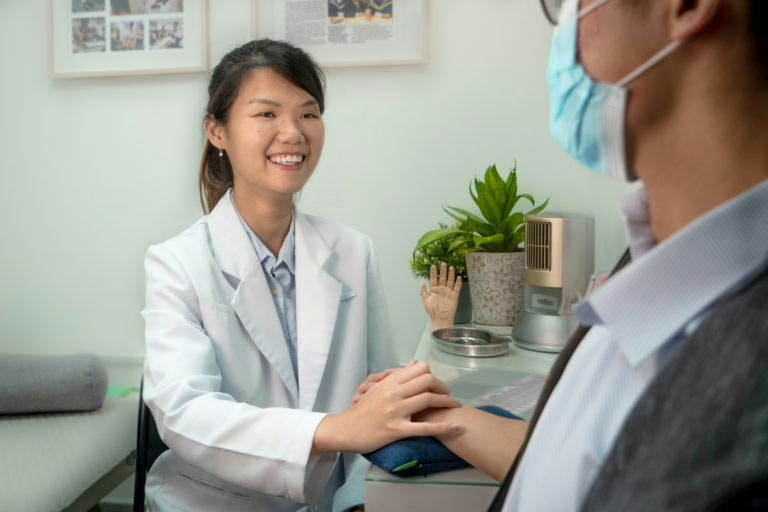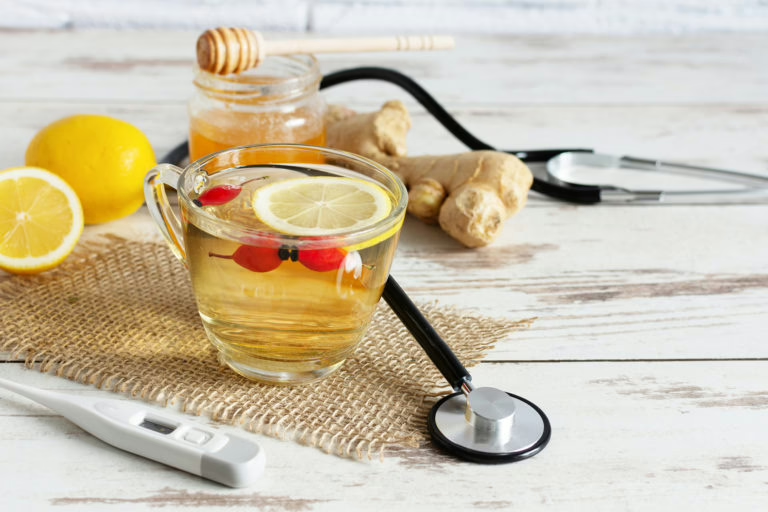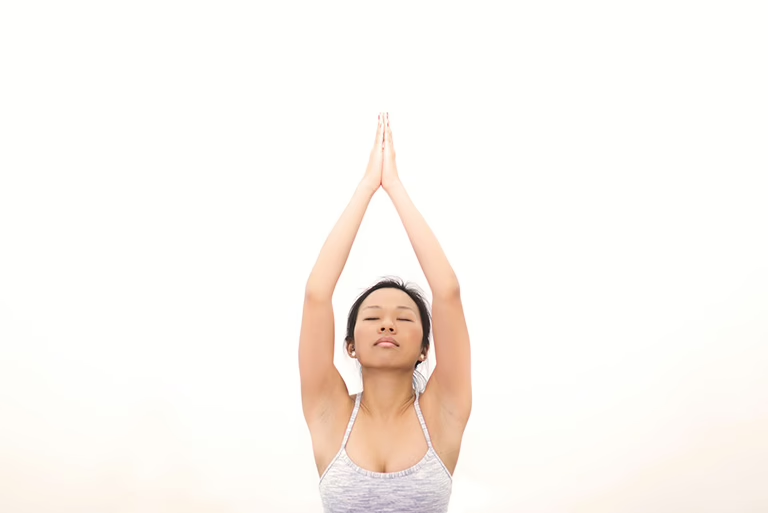A Day in the Life of Traditional Chinese Medicine Physician Ang Lee Fang

A Day in the Life of Traditional Chinese Medicine Physician Ang Lee Fang WE COMBINE THE WISDOM OF TRADITIONAL CHINESE MEDICINE, MODERN TECHNOLOGY, AND PATIENT-CENTERED CARE FOR YOU TO THRIVE IN TODAY’S FAST-PACED WORLD. Share – This article was originally published on Voices Wellness Physician Ang Lee Fang explains how TCM can appeal to a younger generation and how the traditional practice works in tandem with Western medicine. By Samantha Francis. If Traditional Chinese Medicine (TCM) brings to mind bitter herbal drinks, cupping marks, and acupuncture, you’re not alone. While once widely thought to be pseudoscience, the branch of traditional medicine with its origins in China is now considered a valid practice in the Lion City. In fact, TCM practitioners in Singapore are governed by the Traditional Chinese Medicine Practitioners Act. What does a TCM practitioner do? And are their treatment plans in conflict with Western medicine? We speak to physician Ang Lee Fang from Oriental Remedies Group to understand TCM’s place in the modern world. What’s in a day’s work for you? I spend the majority of my day with my patients. While the more experienced physicians see more than 30 patients a day, I’m slowly making my way there. I pride myself on accurately diagnosing and prescribing the appropriate treatment for my patients—nothing beats the satisfaction of seeing their weekly improvements. My role as a physician in a modern TCM clinic extends beyond seeing patients. I’m also involved in creating educational content for our patients and the public, as well as training the team on common health conditions. What’s the most fulfilling part about your job and what’s the most challenging? The most fulfilling part is when I see my patients recover, especially those who have failed to see improvement from prior treatments. I enjoy taking on challenging cases and conditions. When my patients feel their pain and discomfort going away, it’s all worth it. The most challenging part is that many patients expect TCM practitioners to be old because they relate the experience to age. Some are surprised by my youth and may hesitate to fully heed my advice. Thankfully, they become receptive once they see good results from my treatment plan. How do you think TCM has evolved and changed in Singapore over the past decade or so? Singaporeans are now more accepting of TCM. Back then, many held the idea that TCM and western medicine were mutually exclusive. With time and research, it has been proven that the two can work together to bring greater benefits to patients. For example, TCM is an effective complementary treatment for cancer as herbs can be used to minimise the side effects of conventional cancer therapies. These include reducing nausea and increasing appetite, which significantly improves one’s quality of life. The integration of TCM and technology results in better treatment and diagnosis. At Oriental Remedies Group, we offer technology-enhanced therapies that complement traditional treatments for better and faster results. Many of us are graduates from the NTU Chinese Medicine course, where we were schooled in both Biological Sciences (western human anatomy and body systems) and TCM. This allows us to tap on both Eastern and Western perspectives to provide patients with a more efficacious treatment plan. What’s one thing you wish more people knew about TCM? Many think that TCM is only good for sprained ankles or body aches. While it is true that acupuncture is effective in pain management and muscle tension, there is so much more that it can offer. Often, health problems arise due to disruptions in homeostasis (a stable and balanced internal state of the body) and TCM has the ability to regulate your body systems and help improve your quality of life. Some serious chronic conditions that TCM can support include (but are not limited to) male and female fertility, eczema and skin issues, autoimmune conditions, mood disorders, and cardiovascular diseases. It can also treat functional illnesses like “tiredness” and “lethargy”—conditions that are not necessarily recognised as health issues in western medicine but can greatly impact one’s quality of life. How does TCM work in harmony with Western medicine? Or does it have to be one or the other? TCM often acts to support Western medicine. The combination of both is already widely adopted by many in China, which I witnessed first-hand when I shadowed physicians in the hospitals there. More often than not, the two can be used in conjunction to bring about better overall results than using only one form of treatment. TCMOne example is the treatment of fertility conditions. TCM can be used to increase the success rate of IVF/IUI via acupuncture and herbal medication. Even after successful conception, TCM can continue to support the mother-to-be in stabilising the pregnancy and development of a healthy fetus. What are some challenges that come with making TCM relevant and appealing to a younger audience? As our younger audiences are more well-read and more likely to consume information online, they may read about the allopathic view of healing when it comes to specific conditions and therefore disregards TCM. Understandably, TCM may be confusing with abstract concepts such as Yin, Yang, and Qi to the general public. TCM may be seen as old-fashioned by those who do not believe in concepts such as heatiness and dampness. Other sceptics may also prefer methods backed by science. Despite these challenges, I believe we make TCM more relevant to all age groups through education on the right platforms and presenting facts through scientific papers, research, and clinical tests. What does wellness mean to you, and why? Beyond physical health, it’s important to be mentally and emotionally healthy as well. Often, people find it challenging to function properly due to stress. As such, it is vital to address these issues to prevent lapses in concentration and a lack of motivation. With healthy mental and emotional states, people can become almost twice as productive as before. How do you relax when things get too stressful? I enjoy going for a walk
5 Ways To Strengthen Your Immunity Naturally | The TCM Way

WE COMBINE THE WISDOM OF TRADITIONAL CHINESE MEDICINE, MODERN TECHNOLOGY, AND PATIENT-CENTERED CARE FOR YOU TO THRIVE IN TODAY’S FAST-PACED WORLD. Share A collaboration with Eatprayflying, originally posted on Eatprayflying.com Traditional Chinese Medicine (TCM) came under the global spotlight earlier this year when it served a critical role in China’s battle with COVID-19. As scientists around the world are racing against time to formulate a vaccine, more individuals worldwide are turning to traditional remedies to strengthen their immune system. In TCM, your body houses a vital energy called Qi which essentially creates a protective shield, protecting you from external pathogens. This is why TCM focuses on nourishing your Qi to strengthen your immune system! Signs of weak immunity A simple 👅 test can also indicate the state of your immunity – take a mirror or use your smartphone camera to do a quick check! A tongue with scallop outline/teeth marks and a greasy coating (middle picture) is a sign of Qi deficiency and weakened immunity. Other signs of a compromised immune system: Frequent colds/ flus/ body aches Chronic Fatigue Digestive Issues Chronic skin conditions, allergies and inflammation So what can you do to improve your immunity? 1) Eat yellow foods Did you know? Nearly 70% of your immune system is located in your digestive tract? This is why your gut health is so important in maintaining your overall health and immune system. According to TCM’s 5 element theory, the spleen is responsible for your body’s digestive functions and is linked to the colour yellow. Hence, yellow foods helps to nourish your spleen and improve your gut health. Best yellow foods for healthy diet: Pumpkin Sweet Potato Ginger Turmeric 2) Incorporate Huang Qi (Astragalus) for immunity Huang Qi (Astragalus) is one of the most commonly used herbs in TCM for Qi nourishment and has been an ancient favourite for more than 2000 years! It also has immunoregulatory, anticancer, antitumor and antioxidant properties, making it a powerful all-rounder. [1] Pro-tip: Choose The Right Huang Qi I always go for premium Huang Qi which is naturally grown and harvested – this means that they are chemicals & pesticides free! How to tell organic wild Huang Qi from farmed ones? 💛 Colour – Sliced organic Huang Qi’s yellow colour can vary from plant to plant depending on the environment it grows in. Cultivated ones tend to have a stronger yellow colour. 🌿 Fibre Pattern – Fibres on organic Huang Qi slices are not so defined and the pattern also varies from plant to plant. How to use Huang Qi? Physician Leong Weizhen from Oriental Remedies Group (TCM chain in Singapore) recommends using 1-3g of Huang Qi (with up to 1.5L of water) to brew tea on a daily basis 🍵 *Editor’s note: I’m personally very lazy to concoct my own tea so I usually opt for pre-packed tea bags like Oriental Remedies Group’s Immunity Tea! 3) Massage acupressure points Use 4 of your own fingers to get an estimate of 3 inches TCM Physician’s recommendations Massage each point twice a day using finger massage/palmar massage Finger Massage: up to 5mins each time Palmar Massage: 10 – 15mins each time ☝🏽 Finger massage Press in deep and rotate your fingers, your fingers should be in contact with your abdomen as you massage the points. ✋🏽Palmar massage Place both palms facing your abdomen, one palm on top of the other and rotate both palms together in a single direction. 4) Reduce stress and get enough sleep Chronic stress and sleep deprivation (sleep hrs and quality) can weaken your Qi and immunity. This is very common in busy professionals who lead a stressful life with little time to unwind and rest. 💆🏻 Destress and refresh Set aside time for relaxation – if you don’t plan to take a break, you plan to not take a break. Prevent missing out on your downtime by creating an event on your work calendar, treat it as a task instead of an indulgence! 🛌 Get enough sleep hours and quality sleep Adults should aim to get 7 hours of good quality sleep daily. If you find it difficult to fall asleep or wake up feeling lethargic despite enough sleep hours, you could be making these 3 mistakes. More tips on how to sleep better here I used to think I could repay my slept debt during the weekends, little did I know that it was affecting my sleep quality! I shared more about tips on how to sleep better in another post – learn more! 5) Wind Researchers found that air pollution can suppress the immune system’s natural functions and was linked to causing a greater severity of asthma symptoms and lower lung capacity. [2] Prolonged exposure to poor air quality can cause chronic inflammation, asthma is merely one of the resulting conditions due to a malfunctioning immune system. TCM Physician’s recommendations Massage each point twice a day using finger massage/palmar massage Finger Massage: up to 5mins each time Palmar Massage: 10 – 15mins each time While plants are great additions to spruce up your place, their abilities in purifying the air of pollution has been overstated. They are unable to clean the air quickly enough to improve the air quality. [3] 🍃 Air Ionisers are more effective in cleaning the air Air ionisers emit negative ions that eliminate airborne pollutants including dust, bacteria and even viruses. Negative Ions work by attracting positively-charged pollutants in the air by making them heavier and fall to the ground. As a result, the air that we breathe in is now cleaned and safer. [4] PS, I invested in a Reltec’s Air Ioniser years ago and it is still going strong. It is a robust machine that is portable and small so you can keep it anywhere and move it to any indoor area as you wish. It’s currently on sale so it’s a great time to get your hands on one – more info here. On Sale: Reltec’s Air Ioniser As Singapore reopens
When Yoga and TCM blends

WE COMBINE THE WISDOM OF TRADITIONAL CHINESE MEDICINE, MODERN TECHNOLOGY, AND PATIENT-CENTERED CARE FOR YOU TO THRIVE IN TODAY’S FAST-PACED WORLD. Share Yoga and Traditional Chinese medicine (TCM) appear to be two disconnected wellness protocols with distinct origins. Yoga is believed to originate in India circa 3000 B.C., with stone-carved figures of yoga postures found in the Indus Valley depicting the original poses and practices, while TCM dates back more than 3,500 years of Chinese medical practice that includes herbal medicine, acupuncture and cupping therapy. Yet, increasingly, practitioners who marry the two are finding it effective to better help patients and clients. “Adding TCM into your yoga practice creates the opportunity for you to observe the nuances and subtleties of your body on a deeper level. You can then use this newfound knowledge to help you move toward balance.”– Tiffany Cruikshank, founder of Yoga Medicine® To understand why incorporating Traditional Chinese Medicine into your yoga practice can amplify your results, one first needs to understand some fundamentals of TCM. In TCM, there are twelve regular meridians which move the Qi (energy) and Blood, each represent a single organ and connects the internal (organ) to the external (exterior skin). Smooth flowing of Qi through the 12 meridians balances Yin Yang within the body and governs our body functions. On the other hand, stagnation of Qi flow in a particular meridian will result in issues of the organs and areas where the meridian passes through. Many TCM practitioners engage in Qigong practice to ensure good flow of Qi, healthy body constitutions and ultimately mind-body-soul balance. Similarly in yoga, the concept of smooth flowing energy throughout the body essential to the well-being of a yogi. Yin Yoga engages in restful, long-held postures and primarily focus on our body’s meridians.1 Through the poses, yin yoga helps to stimulate the energy pathways by targeting the meridians. When we hold each pose for longer periods of time, we are placing a stress on the fascia (connective tissues) that holds every cell in the body.2 The fibrous connective tissues are strong and springy when you are healthy, rigid and taut when we have a sedentary lifestyle.3 We can dissipate energetic stagnation by activating, squeezing and stretching our body tissues where meridians are located. Fascia, like meridians, will benefit with smooth flowing energy through it. The twelve meridians are named after its respective associated Organ and are associated with various emotions such as fear, excitement and anger. Excessive emotions are viewed to disturb the harmony in one’s body. In TCM when we treat an organ and its respective emotions, we help to ensure good Qi flows and balance of the autonomic nervous system. This balance is critical to our holistic well-being. Source: www.pexels.com In yoga practice, it is important to still our mind and body to achieve harmony in the body. Many occasions yoga instructors advise students to engage good breathing techniques as these not just help with good circulation of oxygen through the muscles, but it also has calming effects on the mind. Breath controls the body, mind, and emotions.4 In the process of calming the mind, balancing our emotions, both TCM and yoga actively utilise meditation as a key approach. Many people find it difficult to meditate as we are not used to it. Yoga postures are a great way of preparing the body for meditation, stimulating the flow of energy and balance to our spine and our mind.5 They work hand-in-hand and are interrelated to bring about higher awareness of our body and conscience. Harvard researchers have also found that meditation not only reduces stress but can produce scientifically measurable effects on the brain’s physiology.6 If you are looking for inspiration to start meditating, try reading real stories from people on their mediation journey and how it helped them.7 Source: Natural Health Zone As more research goes into TCM and yoga, there will bound to be more positive benefits by blending both traditional wellness protocols together. If you are keen to find out more about marrying Traditional Chinese Medicine with Yoga, check out our Partner Jal Yoga. [email protected] Alexandra Studio 991 Alexandra Road #01-03A (S)119964 map 6251 0710 Upper Bukit Timah Studio 260 Upp Bt Timah Rd #02-01 (S)588190 map 6732 1483 Katong Studio 131 East Coast Road #03-01 (S)428816 map 6241 3758 Upper Thomson Studio 213 Upp Thomson Rd #01-01 (S)574348 map 6258 9621 Woodlands Studio 30 Woodlands Ave 1, #02-5A, (S)739065 map 6909 9829 To learn more about Oriental Remedies Group, visit our homepage or contact us via Whatsapp at +65 8087 0486 Disclaimer: The content on this page is for informational and educational purposes only. Such medical information may relate to disease, injury, drugs and other treatments, medical devices and/or health products. Medical information does not amount to advice, and if advice is needed an appropriate professional help should be sought. The disclaimer asserts that no warranties or representations are given in respect of the medical information, and that the website operator should not be held liable if a user suffers any injury or loss after relying upon the medical information. RELATED TOPICS
What is Far-Infrared Therapy (FIR) And What Does It Do?

What is Far-Infrared Therapy (FIR) And What Does It Do? WE COMBINE THE WISDOM OF TRADITIONAL CHINESE MEDICINE, MODERN TECHNOLOGY, AND PATIENT-CENTERED CARE FOR YOU TO THRIVE IN TODAY’S FAST-PACED WORLD. Share Far-Infrared Therapy involves the use of Far-Infrared Rays (FIR), which are invisible waves of energy that penetrate the surface of the skin to gently elevate the body’s surface temperature and promote body systems’ functions. Thermal therapy has in fact been in existence for thousands of years, dating back to ancient civilizations such as the Finns, the Romans, the ancient Chinese, the American Indians and the Egyptians 5,000 years ago. Since ancient times, people have known that exposure to sunshine can maintain and enhance health. Sun therapy is a form of natural FIR thermal therapy and Far-Infrared Rays are the invisible rays of natural sunlight that have the longest wavelength. However, sunlight contains harmful ultraviolet rays which can burn the skin. As such, people started using pure Far-Infrared heat emitted from healing units, which has similar benefits as sun rays, minus the harmful UV rays. Benefits of Far-Infrared Technology For many decades, scientific evidence has found that heat can maintain and enhance the wellness of the human body. Scientists have researched different ways on how to develop more effective forms of thermal heat therapy that target specific areas and enable deep heat penetration. Traditional forms of heat therapy can be hazardous, uncomfortable, unhygienic, inefficient and ineffective. Traditional saunas create exposure to extremely high temperatures causing heat stress which can have detrimental effects on health, especially for people with heart challenges or needing to sustain blood pressure. Thermal compression and wraps are uncomfortable, heat is easily lost, temperature does not remain constant and maintaining a thermal compression or wrap can be problematic and inconvenient. Research and development in the sixties – notably most extensively in Japan and also Germany – introduced the Far-Infrared Ray (FIR) thermal technology. This revolutionized thermal technology to an effective, safe, natural, hygienic and efficient approach to thermal treatment. Today, heat therapy is used internationally by medical professionals for relief of sports injuries, detox, and even in hospital nurseries to warm newborns. While more large-scale research needs to be done to prove the benefits of Far-Infrared Therapy, here are some potential benefits from existing research and patient testimonials. 1) Improve blood circulation Far-Infrared expands capillaries which stimulate increased blood flow, regeneration, circulation and oxygen delivery. [1] Good blood circulation is essential for healthy organ and tissue function. 2) Strengthens cardiovascular system Far-Infrared can strengthen the cardiovascular system by causing heart rate and cardiac output increase, and diastolic blood pressure decrease – research by NASA in the early 1980s led to the conclusion that far-infrared stimulation of cardiovascular function would be the ideal way to maintain cardiovascular conditioning in American astronauts during long space flight.[2] FIR’s warming properties have also been shown to help improve the ‘health’ of the cells that line our blood vessels[3], which if left untreated may increase the risk of heart disorders. 3) Improve detoxification Far-Infrared is excellent for detoxification and helps lymphatic drainage.[4] Scientists in Japan report that in the FIR treatment of clogged capillary vessels, heat expands the capillaries and then initiates the start of a process to dissolve hidden toxins.[4] Far-Infrared thereby promotes the elimination of fats, chemicals and toxins from the blood: poisons, heavy metals – carcinogenic substances from food processing – lactic acid, free fatty acids and subcutaneous fat associated with aging and fatigue – excess sodium associated with blood pressure – and uric acid.[5] 4) Wound healing Some recent good quality experimental and clinical scientific studies (2003) from Japan have shown FIR to result in more rapid wound healing which was independent of changes in blood flow and skin temperature.[6] FIR helped this healing by stimulating a group of cells called fibroblasts to make more collagen which is a very important part of good wound healing and tissue repair.[6] Furthermore, it supports cell growth, DNA synthesis and protein synthesis, all of which are crucial for tissue repair and regeneration. This makes FIR therapy excellent for healing burns, scar tissue and skin problems such as acne and skin breakouts. Its anti-oxidative properties also promote anti-aging and lessening/softening of wrinkles due to enhanced collagen production.[6] 5) Relaxation and pain/aches management FIR relaxes auto-neuro muscles which help the body make the most of its intended healing abilities. FIR reduces soreness on nerve endings and muscle spasms by warming muscle fibers. As a result, rapid reduction of swelling, inflammation, and pain occurs. This allows for relaxation of muscles and relief of back, shoulder, and neck muscle aches.[7] FIR soothes tension and stress in both body and mind.[7] 6) Immunity boosting Far-Infrared strengthens and supports the Immune system by supporting increased production of white blood cells (leukocytes) by the bone marrow and killer T-cells by the thymus.[8] 7) Cancer support Far-Infrared Thermal Therapy, also known as Hyperthermia, supports the destruction of malignant cells which supposedly cannot survive if the temperature of the cell becomes 107.6F/42C and above.[9] FIR is used extensively in Asia and Europe – especially Japan and Germany – but is only fairly recently researched and utilized within the USA, acknowledged and attested to by the American Cancer Association and the National Cancer Institute on their respective websites. Your healing is the most important! At Oriental Remedies Group, most of our physicians are trained in both Biomedical Science and TCM at Nanyang Technological University (Singapore) and China for a minimum of 5-8 years before being certified to practice in Singapore. If you would like to learn more about FIR Therapy and how it can boost your overall wellness, visit FIR Treatment Page or contact us at +65 8087 0486 for a personalized consultation. This article is written by Physician Foo Shan Ju. Physician Foo Shan Ju (Oriental Remedies Group, Singapore), a registered TCM physician certified by the Traditional Chinese Medicine Practitioners Board (TCMPB). Foo Shan Ju PHYSICIAN VIEW QUALIFICATIONS Disclaimer: The information on this page is for information and